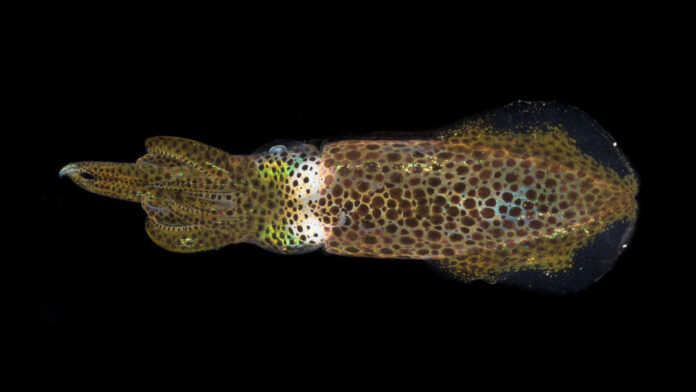Squid skin has a remarkable ability to quickly change its appearance. Specialized layers of organs in their skin are controlled to affect how light interacts with it, absorbing and reflecting light in various ways to create patterns of colour and iridescence that help them camouflage or stand out from their surroundings at will.
It’s an enviable ability that has inspired a new way to think about controlling the ‘skin’ on our buildings to get bigger benefits from sunlight. University of Toronto researchers, led by associate professor Ben Hatton, engineered a layered window design with adjustable optical properties and they published their study in PNAS.
Indoor climate control takes up nearly a third of our energy footprint. That’s more than what we use on transportation or manufacturing. Finding ways to be smarter about how we control sunlight streaming through our windows could mean significant energy savings.
“Sunlight contains visible light, which impacts the illumination in the building — but it also contains other invisible wavelengths, such as infrared light, which we can think of essentially as heat,” said first author Raphael Kay in a press release.
“In the middle of the day in winter, you’d probably want to let in both. But in the middle of the day in summer, you’d want to let in just the visible light and not the heat. Current systems typically can’t do this; they either block both or neither. They also have no ability to direct or scatter the light in beneficial ways.”
The team’s prototypes are made up of flat sheets of plastic sandwiching thin channels that fluids can be pumped through. The team built up a versatile library of non-toxic pigments, particles, and other molecules that interact with light.
Digitally-controlled pumps can move fluids containing these molecules in or out of the channels to adjust light intensity, filter unwanted wavelengths, or even change the direction of light. Used as a stack, these functions can be layered to combine and control individual properties for an endless number of possibilities.
Using computer modelling, the team calculated the potential impact of using their system on simulated buildings.
“If we had just one layer that focuses on modulating the transmission of near-infrared light — so not even touching the visible part of the spectrum — we find that we could save about 25 percent annually on heating, cooling and lighting energy over a static baseline,” added Kay.
“If we have two layers — infrared and visible — it’s more like 50 percent. These are very significant savings.”
With increasing urbanization and projected air conditioning demand, the emissions associated with buildings is predicted to double or triple by 2050. Smart, dynamic windows like these could change this trajectory by helping us benefit from solar energy by controlling it in new ways.





































